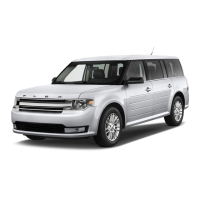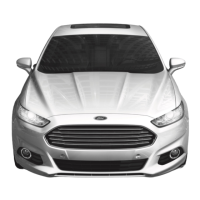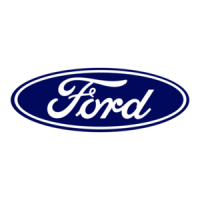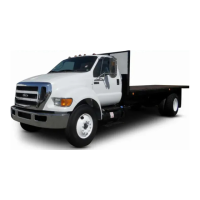
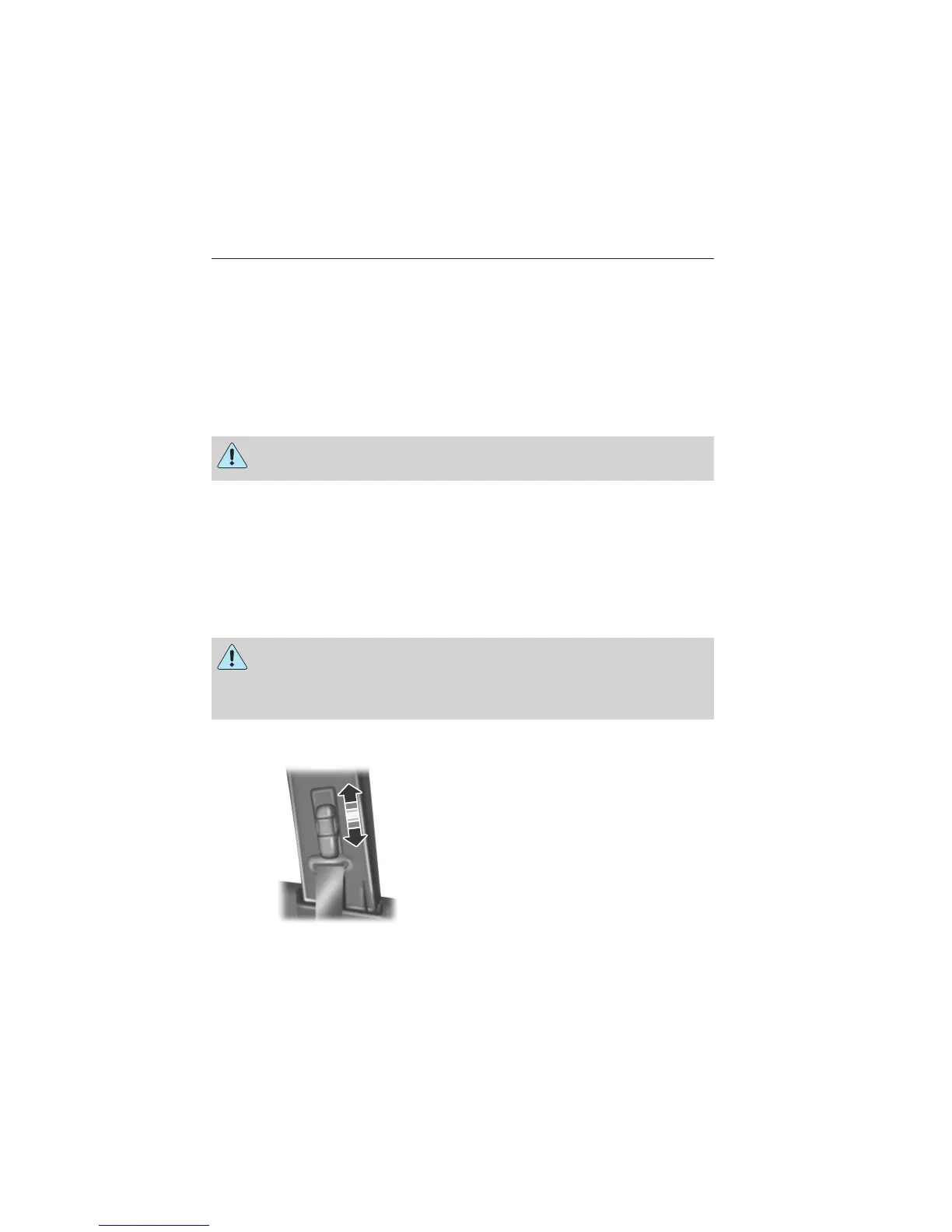 Loading...
Loading...
Do you have a question about the Ford 2013 F-650 and is the answer not in the manual?
| Brand | Ford |
|---|---|
| Model | 2013 F-650 |
| Category | Automobile |
| Language | English |
Procedure for conducting a pre-trip inspection.
Steps and checks for starting the engine safely with the parking brake applied.
Information on using child safety seats and their positioning.
Guidance on using booster seats and when a child is ready for a vehicle belt.
Step-by-step instructions for installing child seats with seat belts.
Explanation of the LATCH system and its anchor points.
Instructions on how to attach tether straps to anchors.
Instructions on how to buckle and unbuckle the vehicle's safety restraints.
Specific instructions for using safety belts with a cinch tongue mechanism.
Guidelines for proper safety belt use by pregnant women.
Explanation of vehicle-sensitive and automatic locking modes for safety belts.
Instructions for adjusting the shoulder belt height for proper positioning.
Details on the illumination and function of the safety belt warning system.
Explanation of the Belt-Minder® feature and its operation.
Instructions on using the power door lock controls.
Procedure for adjusting the steering wheel's position.
Instructions for operating windshield wipers and washers.
Guidance on using the windshield washer system.
How to operate parking lamps and headlamps.
Safety and operating instructions for power windows.
How the one-touch feature works and how to restore it.
Instructions for adjusting power exterior mirrors.
Description of gauges for diesel engine models.
Indicates engine oil pressure and troubleshooting steps.
Indicates engine coolant temperature and actions for overheating.
Indicates the level of diesel exhaust fluid.
Indicates the amount of fuel left in the tank.
Description of gauges for gasoline engine models.
Indicates transmission fluid temperature and potential issues.
Alerts for vehicle conditions that may become serious.
Indicates ABS malfunction if illuminated while driving.
Indicates if the 12-volt battery is not charging properly.
Indicates transmission problems, potentially restricting shifting.
Indicates low diesel exhaust fluid level.
Indicates when the diesel particulate filter requires assistance.
Indicates transmission problems, potentially restricting shifting.
Illuminates when engine oil pressure is low.
Reminds driver to fasten safety belt with an audible chime.
Indicates when the fuel level is low or near empty.
Indicates when ignition is on or parking brake is engaged.
Illuminates when a powertrain fault has been detected.
Indicates ignition check and potential powertrain malfunction.
Red lamp illuminates when the engine needs to be stopped.
Indicates Off Road/Mud/Snow mode selection or traction event.
Illuminates when the air intake heater is in operation.
Indicates significant quantity of water in the fuel filter/water separator.
Displays and actions for various system messages.
Controls for selecting AM/FM bands and setting the clock.
Operation of the audio system with AM/FM and CD functions.
How to connect and play music via the auxiliary input jack.
Connecting media devices and charging via the USB port.
Solutions for common radio display and system issues.
Controls for manual heating, air conditioning, and air distribution.
Guidelines for proper seating position for optimum safety.
Safety information and adjustment of head restraints.
Safety warnings and instructions for operating power seats.
Steps for starting a gasoline engine.
Warnings and procedures for starting a diesel engine.
Explanation of the DPF regeneration process and driving conditions.
Procedure for performing parked regeneration and safety precautions.
General safety warnings related to handling automotive fuel.
Recommendations for appropriate fuel types for gasoline and diesel engines.
Instructions and warnings for safe refueling procedures.
Table showing DEF level warnings, consequences, and remedies.
Table showing DEF quality warnings, consequences, and remedies.
Warnings and guidelines for filling the DEF tank.
General guide to operating manual transmissions.
General operation and warnings for automatic transmissions.
General information on brake system operation and self-adjustment.
Troubleshooting steps for brake performance issues.
Information on ABS system operation and indicator lights.
Warning against operating with a failed brake system.
General information and warnings about the parking brake system.
Procedures and warnings for manually releasing spring brakes.
How to activate and use traction control modes.
How cruise control maintains a set speed.
Warnings and notes for using cruise control safely.
Steps to set a desired speed for cruise control.
Safety warnings and procedures for backing up the vehicle.
Safety warnings and procedures for parking the vehicle.
Warnings about exceeding GVWR or GAWR.
Warnings and recommendations for towing a trailer.
Warnings for fifth-wheel hook-up and unattended parking.
Warnings for manually releasing spring brakes.
Precautions and procedures for driving through water.
Information on Ford's complimentary roadside assistance program.
Safety warnings and procedures for jump-starting a vehicle.
Instructions and warnings for connecting jumper cables.
Steps to follow for warranty repairs and resolving service issues.
How to report vehicle safety defects to NHTSA and Ford.
How to report vehicle safety defects to Transport Canada.
Procedure and safety warnings for changing fuses.
Diagram and list of fuses in the power distribution box.
Table detailing fuse/relay locations and protected circuits.
General warnings and guidelines for performing vehicle maintenance.
Safety guidelines to follow when servicing the vehicle.
Precautions for handling brake linings and general brake system service.
Inspection and adjustment of air brake systems.
Importance of maintaining the steering system and regular inspections.
Safety precautions for supporting the vehicle during service.
Procedure for checking and adding engine oil.
Checking engine coolant levels and concentration.
Warnings and procedures for adding engine coolant.
Procedure for checking automatic transmission fluid levels.
Warnings and procedures for checking and refilling brake fluid.
Procedure for checking power steering fluid level.
Safety warnings and procedures for changing the vehicle battery.
Step-by-step instructions for changing wiper blades.
Tips for cleaning windshields and wiper blades.
How to clean the instrument panel and cluster lens safely.
Importance of tire condition, inflation, and safe mounting procedures.
Importance of proper tire inflation for vehicle and tire life.
Procedure for checking tire inflation pressure.
How to inspect tires for abnormal wear patterns and conditions.
Procedure for installing and tightening wheels.
Importance of proper torque for wheel and rim mounting nuts.
Specifications for wheel lug nut torque.
Recommended Motorcraft engine oil types and specifications.
Specifications for master cylinder brake fluid.
Capacities for engine coolant, oil, and transmissions.
Capacities for engine coolant and oil by engine type.
Importance of vehicle maintenance for reliability and value.
Basic maintenance checks to be performed monthly or semi-annually.
List of daily checks for engine, brake, transmission, and steering systems.
Table of observations and corresponding maintenance operations.
Warnings and recommendations for emissions control systems.
Warning about maintaining proper air brake adjustment.
Inspection and adjustment of air brakes with automatic slack adjusters.
Maintenance intervals for on-highway driving at high mileage.
Engine maintenance schedule for on-highway driving.
Maintenance intervals for city driving at lower mileage.
Maintenance intervals for severe service conditions.
Maintenance for automatic and manual transmissions.
Warnings about driving while distracted and using electronic devices.
How to start a voice session and available commands.
Voice commands for phone functions.
Main features of SYNC for hands-free calling and phone functionality.
Step-by-step instructions for wirelessly pairing a phone.
Procedure for making calls using voice commands.
How to answer, reject, or ignore incoming calls.
Options for managing Bluetooth devices and features.
Solutions for common SYNC phone and media issues.
Solutions for when SYNC does not understand voice commands.
Warnings and procedures for setting up and using the 911 Assist feature.
How SYNC attempts to contact emergency services after a crash.
How to use Vehicle Health Report for maintenance and diagnostics.
Activation and use of SYNC Services for traffic and navigation.
How to access and play music from digital media players.
Procedure for connecting media players via USB.
Voice commands for USB media playback.
Selecting and playing media by artist, album, genre, etc.
Warning against prolonged screen views while driving.
Warnings about distraction from manual setup or data entry.
Do not follow route suggestions that lead to unsafe maneuvers.
